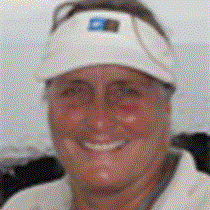Isabela
We slept peacefully at anchor off Punta Espinoza, Fernandina Island until the wee hours before dawn. The chefs of National Geographic Islander were the first to rise – they had bread to bake and breakfast to cook – and then the Captain, helmsman and boson hauled the anchor and set our course towards southern Isabela. We anchored at sunrise off the dark rocky coast in Urbina Bay and following breakfast four groups of guests accompanied by a Naturalist guide each, disembarked on a steep black sand beach. On the crest of the beach there were large meter-deep holes and the guides explained that Urbina is a major sea turtle nesting area. During the night female turtles come ashore to dig nests and bury their large soft shelled eggs under the sand. Two months later the hatchlings emerge, run down the beach to the water, and start off on a dangerous and lengthy life at sea.
Naturalist Jeffo and Greg lead the fast walkers on a loop trail that followed the coast and turned inward through a palo santo forest. Aura took the same long two-mile hike, but with guests that wanted to take their time and take many photos, so they hiked at a slower pace. I took the guests who opted for a shorter hike, and all of us had a delightful outing this morning. We had expected to find land iguanas and we did! There were several large, bright yellow and orange male iguanas sunning themselves in the open along — or even in the center of — our trail. There is not much for them to eat this time of the year as much of the vegetation is dead and dry, so these reptiles spend much of their time resting and basking and just waiting for the rains and the breeding season to begin.
We had not expected – but the guides had hoped – to find giant tortoises – and we did! Volcan Alcedo is the home and estimated 11,000 tortoises, the largest population in Galápagos, and three of them had wandered down to Urbina. Two of the tortoises we found were young, small individuals that were probably between 12-18 years of age. The third, seen only by two of our four groups of hikers, was a large male who was on the move. He stomped across an open pampa and then crashed down a slope through the dry vegetation. We heard a dark-billed cuckoo calling and Jeffo predicted that it would soon rain as these birds are called “aguatero” (rainbird) in Spanish.
And rain it did! It drizzled at first and then came down pretty heavily on those of us who went on the aftenoon’s hike up the Tagus Cove trail. Our toughest impediment was not the water that dripped however, but a couple of very grouchy male sea lions that did not want to clear off the stairs to let us past. Jeffo and Greg finally banged and clapped them into submission and we managed to get beyond them and had a great hike to the end of the trail above a mineral laden crater lake.
The afternoon snorkeling was fabulous; we joined penguins, sea turtles and a friendly sea lion for about an hour in the cool water. Aura took two groups of kayakers along the shore of Tagus Cove and there was much to see: cormorants, pelicans, sea lions, noddy terns and blue-footed boobies were perched on the rocky shore. Wet, but pleased, with the afternoon’s outings we had hot showers and convened in the Lounge to learn about tomorrow’s plans.




